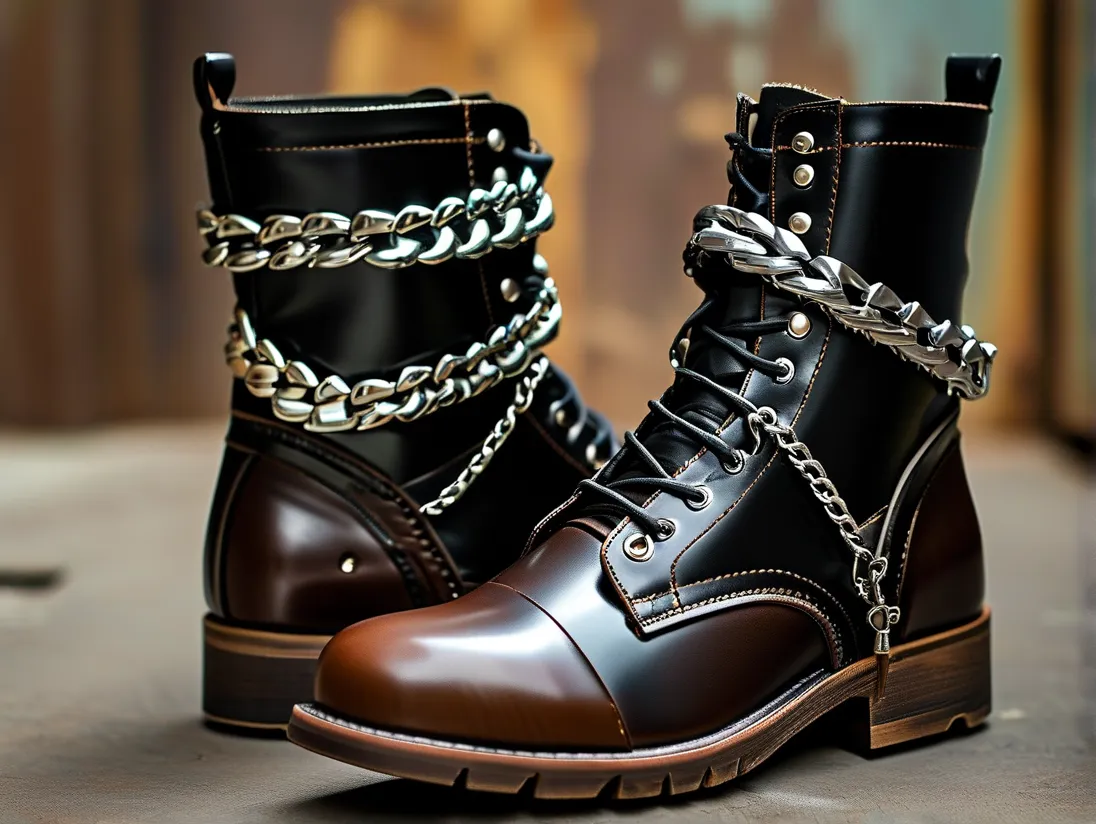When choosing motorcycle boots that balance safety and style, riders often face a dilemma between biker boots with chains and classic leather motorcycle styles. Both options cater to distinct preferences, but understanding their functional differences ensures you invest in footwear that aligns with your riding habits and aesthetic goals.
1. Safety Features: Chain-Adorned vs. Classic Designs
Biker boots with chains prioritize reinforced protection for urban and aggressive riding. Many models feature steel toe caps, ankle armor (CE-certified in premium brands like Alpinestars), and oil-resistant soles for grip on slick surfaces. Chains are typically riveted for durability but add minimal weight.
In contrast, classic leather motorcycle boots (e.g., Harley-Davidson’s Heritage line) focus on long-distance comfort with padded collars and shock-absorbing midsoles. While lacking overt hardware, they often include anti-twist shanks and abrasion-resistant full-grain leather (1.2–1.4mm thickness) tested to EN13634:2017 standards.
Pro Tip: Check for CE certification in both styles—62% of riders in a 2023 RiderSafe survey prioritized this feature for crash protection[^1].
2. Material & Construction: Durability Under Pressure
Chain-detailed boots commonly use heavyweight leather (1.3–1.6mm) with double-stitched seams to withstand road debris. However, exposed chains may snag on gear shifters during tight maneuvers—a concern noted by 28% of urban riders in MotoJournal’s 2024 poll[^2].
Classic styles employ oil-tanned leather treated for water resistance, ideal for touring. Brands like Dainese integrate breathable liners to prevent sweat buildup during multi-hour rides. Both styles require regular conditioning; silicone-based products preserve leather flexibility without softening protective layers.
3. Style vs. Function: Matching Boots to Riding Scenarios
Edgy chain boots dominate in urban environments, pairing seamlessly with cafe racer jackets and slim-fit denim. Their bold aesthetic appeals to riders valuing self-expression—76% of respondents under 35 cited “personal style” as a key purchase factor[^3].
Classic designs excel in versatility. Neutral tones (black, brown) transition from bike to casual settings, while streamlined profiles prevent bulkiness during footpeg adjustments. For adventure touring, brands like Sidi integrate adjustable calf straps absent in chain-heavy models.
4. Comfort & Break-In Periods
New chain-accented boots often require 2–3 weeks of wear to soften stiff leather around the ankle rivets. Gel insoles (e.g., Superfeet GREEN) mitigate pressure points during break-in.
Classic boots prioritize immediate comfort via pre-curved lasts that mimic foot anatomy. Iconic models like the Red Wing Iron Ranger use cork midsoles that mold to the foot over time—ideal for riders logging 200+ miles weekly[^4].
How to Choose: A Rider-Centric Checklist
- Riding Frequency: Daily commuters benefit from chain boots’ abrasion resistance; weekend cruisers may prefer classic comfort.
- Weather Conditions: Waterproof membranes (Gore-Tex) in classic styles outperform non-treated chain designs in rain.
- Maintenance Commitment: Chain hardware demands rust prevention sprays (WD-40 Specialist Corrosion Inhibitor).
Final Verdict
Neither style is universally superior—biker boots with chains deliver unmatched urban flair and impact protection, while classic leather motorcycle boots offer timeless versatility for varied terrains. Always prioritize fit: toes should graze the boot’s end when standing, with no heel slippage during simulated gear shifts[^5].
[^1]: RiderSafe Institute, 2023 Motorcycle Gear Safety Report
[^2]: MotoJournal, Urban Riding Challenges Survey, March 2024
[^3]: RevZilla Consumer Trends Analysis, Q1 2024
[^4]: Red Wing Heritage Care Guide, 2023 Edition
[^5]: Michelin Footwear Safety Guidelines, Revised 2022




Leave a Reply